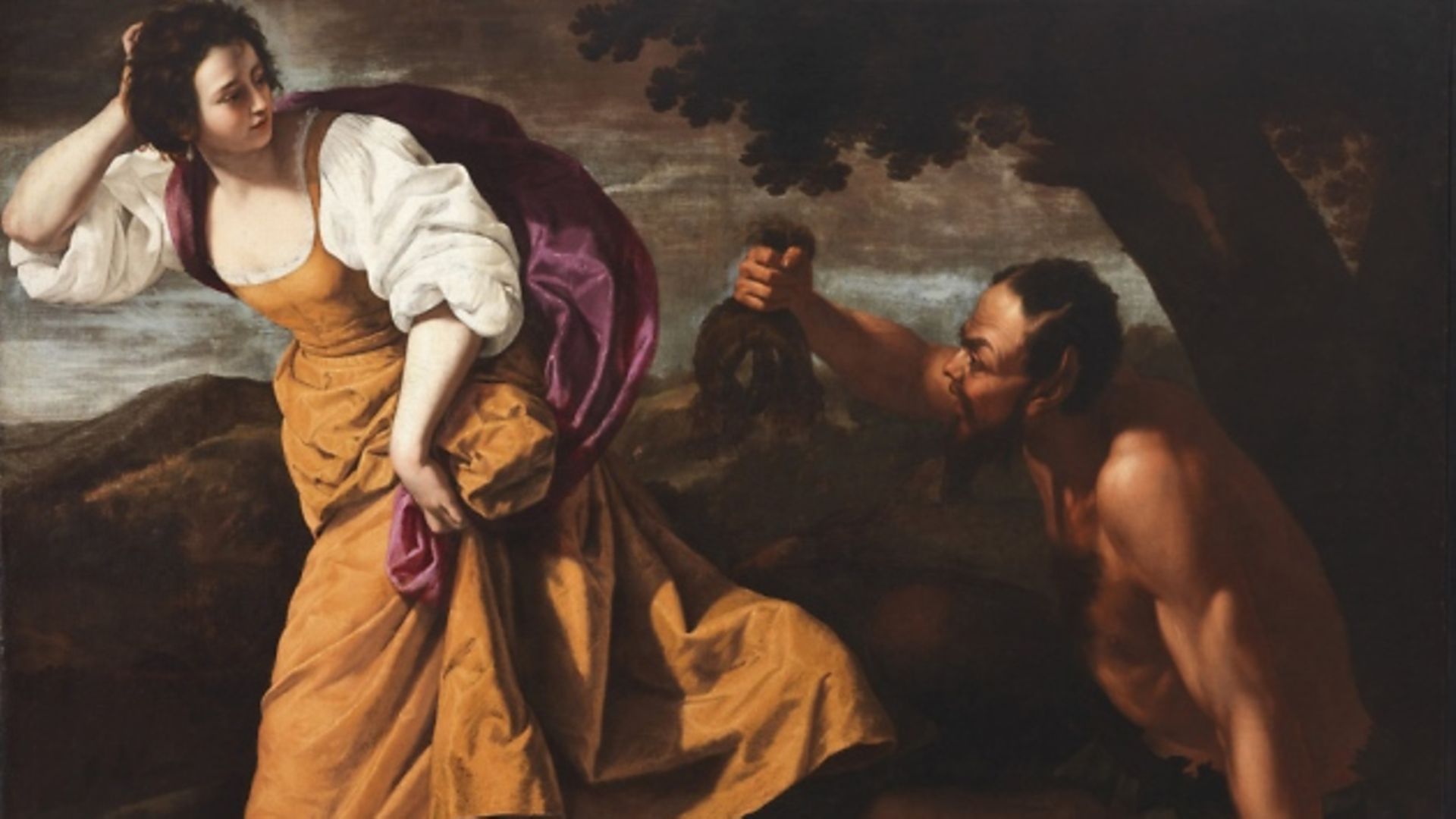
In 1630, as plague devoured Venice, killing one third of its citizens, one successful young artist slipped south to Naples, in search of cleaner air and commissions. Artemisia Gentileschi was highly skilled not only at painting but also at assimilating.
Born in Rome in 1593, she learned her craft in the shadow of her painter father Orazio Gentileschi, her mother dying when Artemisia was 12.
Her girlhood was spent looking after younger brothers and acquiring skills that would secure her a good livelihood as a painter in her own right.
In Florence, where she moved on marrying, she briefly adopted the ancestral Tuscan surname Lomi, to improve her local credentials.
She fitted right in, being paid rather more than most for her contribution to the lavish decoration of the Casa Buonarroti, near Santa Croce.
Once the home of Michelangelo, who had died 50 years earlier, the house was preserved in an almost shrine-like state by his great-nephew. Visitors today can still see Artemisia’s ceiling painting, appropriately an allegory of inclination, or innate artistic ability, and probably a self-portrait.
Successful in Florence until she got on the wrong side of the supreme Cosimo II of Medici, after a row about quantities of a valuable pigment, Artemisia hightailed back to Rome in 1620.
In the late 1620s, Venice beckoned, until, after three years or so, its embrace was toxic. Her retreat to Naples in 1630 was interrupted in 1638 by the chance to work alongside her father once more, in London.
At the Queen’s House in Greenwich, father and daughter worked on the allegorical ceiling paintings that are now in Marlborough House in St James’s.
Artemisia stayed on after Orazio’s sudden death, probably leaving in the early 1640s.
In the mid-1650s she died in Naples. Another wave of plague, seeping up from north Africa to Spain and southern Italy, may finally have caught up with her.
Often in the right place at the right time, the restless Artemisia Gentileschi took command whenever one or both of those coordinates were wrong.
From an early age she had been obliged to adapt. Although raised in a world of pigments and models, her obvious early talent was not fully nurtured.
She was not allowed to draw from life, nor venture out alone in her art-enriched native Rome, to draw and to learn from its classical sights.
And yet she had the advantage at least of observing and imitating her father, and developed enviable skills that paved the way to decades of success as a painter in her own right.
Less advantageous to his daughter was the company that Orazio Gentileschi kept. Raped by one of his associates, she was tortured in accordance with the law of the day, to test the veracity of her tale.
“It’s true! It’s true! It’s true!” she cried out as the fingers that held her brushes were crushed by an ever-tightening binding.
The same father who had kept his daughter indoors and denied her drawing opportunities in the city, only took her part when her attacker refused to marry her. Legal action centred not on the assault itself, but on the deflowering of his daughter.
Small wonder, then, that the paintings of Artemisia are invested with a fury that suited the visceral biblical subjects that artists constantly revisited, interpreting scenes that were familiar to their audiences with ever maturing psychological insights, dramatic compositions and bravura technique.
Of all Artemisia’s substantial output, it is Judith Beheading Holofernes (1613-14) that seethes most lividly with a woman’s hatred for an abusive man.
On loan to the National Gallery from the Uffizi in Florence, for the first major exhibition devoted to this increasingly respected painter, it is an uncompromising calling card.
It takes two women to pin down the Assyrian invader. Even then, without this one unrepeatable surge of strength both will perish if the unwieldy victim overpowers them.
Artemisia drills into the composition with a force born of injustice and of her singular capacity for beating the odds – as a rape victim, as a woman making her way in an art world dominated by men, and as a wife and mother scrabbling through domestic and professional challenges, packing up and moving at a moment’s notice.
This Judith is no graceful righter of wrongs invested with divine strength, but a determined flesh-and-blood assassin, with a single chance to bring down a lustful tyrant. Her female accomplice is no less aggressive. Women, when Artemisia was at the easel, were not merely ornamental.
As a relatively rare female artist, Artemisia had one major advantage. She could give her female subjects verisimilitude – and save money – by setting up a mirror and using herself as a model.
In self portraits of herself as Saint Catherine of Alexandria, as a lutenist, as a martyr, she appears over and over again.
Her broad face with its strong features and her sturdy physique, with arms honed by hard graft, give a unity to work that spans 40 years.
She does not flatter herself, but her own portraitist and friend Simon Vouet is kinder, presenting not an artisan but a lavishly dressed gentlewoman with impressive pearl earrings, her gracefully curved fingers displaying the small, neat tools of her trade. There is no hint here of Judith, sawing through gristle.
Before her foray to Florence, Artemisia absorbed through Orazio the influence of Caravaggio, active in Rome during her childhood apprenticeship.
His chiaroscuro effects and intense dramatic compositions echo in her own early work, as they do in the work of her contemporaries.
Two years before the death of Caravaggio, Orazio shows Judith, taking advantage of the lust of her enemy Holofernes, slaughtering the drunk Assyrian general in his tent. She and her servant swing round, alarmed by a noise outside, and the possibility of detection. Will they be disturbed and found out too soon to make their escape? The drama and lighting is Caravaggesque.
But when Artemisia tackles the same theme in her early 20s, now as a wife and mother, she depicts more knowingly the intimacy of women, placing the figures much closer together, heightening the sense of fear.
It is subtle variations such as these that impress National Gallery curator Letizia Treves. “It is not the subjects that are unique, it is the way she approaches them.”
Perhaps the scars of the assault fade with the years, for angry early pictures give way to something more secure or benign. Whereas, in an early portrayal of the virtuous Susannah, the wronged wife from the Book of Daniel cringes from the lascivious elders who ogle her as she bathes naked, a later Susannah confidently meets their gaze.
Artemisia herself is focused and workmanlike in her Self-Portrait as the Allegory of Painting (La Pittura) (1638-39), painted at the time of the Queen’s House commission and owned by Charles I, who had invited the artist to London.
Sold in the Commonwealth sale and retrieved during the Restoration, it is once more in the Royal Collection. But, believes Treves, other works from this period are yet to be recovered. The story of Artemisia’s restless life and works is far from over. “There must be others out there.”
Artemisia runs at the National Gallery, London, from October 3 to January 24










